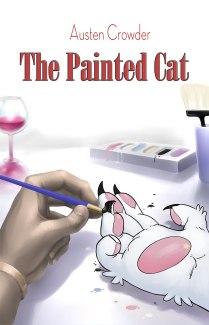A Whisper of Wings, by Paul Kidd – Book Review by Fred Patten.
by Pup Matthias
Submitted by Fred Patten, Furry’s favorite historian and reviewer.
A Whisper of Wings, by Paul Kidd. [Second edition]
Raleigh, NC, Lulu.com/Perth, Western Australia, Kitsune Press, June 2015, hardcover $51.95 (557 pages), trade paperback $31.34, Kindle $8.99.
 The first edition of A Whisper of Wings was arguably the first professional furry specialty press book ever published, by Vision Novels in October 1999. Anything before that was really a fanzine calling itself a book.
The first edition of A Whisper of Wings was arguably the first professional furry specialty press book ever published, by Vision Novels in October 1999. Anything before that was really a fanzine calling itself a book.
Kidd basically gave his manuscript to Vision just to get it published, after being told by the editors of all the major publishers for years, “A serious adult novel with funny-animal characters? Nobody will ever buy it.” Vision got out two trade paperback novels with anthropomorphic animal characters, both by Paul Kidd, before disappearing in 2001, and A Whisper of Wings has been almost unknown since then. Now Kidd has republished it through his own Kitsune Press, with Terrie Smith’s unused 1997 cover painting. If you never read it before, get it now!
A Whisper of Wings is pure fantasy. It is set in an Australian wilderness more mountainous and forested than the Outback desert, inhabited by the butterfly-winged foxlike Kashra, an alpine aboriginal tribal people. The Kashrans possess a psychic force, the Ka, that the more powerful Kashrans use to enhance their wing-power to make themselves better flyers and hunters. There is also an ïsha world-force, a “Mother Nature” spirit that some Kashran can use to get closer to the forest’s ecology. This Kashran society is thousands of years old and has become rigidly stratified – really ossified. Their civilization is divided into numerous male-dominated tribes, each ruled by a hereditary aristocracy and all under a traditional priesthood. Each tribe is supported by its elite hunters, and by its lower-class artisans who make trade goods. Each tribe is more-or-less self-supporting, coming together for only the annual jiteng games (roughly an aerial soccer tournament) and ceremonial tribal gatherings, at which each tribe tries to outdo the others in lavish feasts and similar displays of conspicuous consumption. Read the rest of this entry »


 45 pages), Kindle $2.99.
45 pages), Kindle $2.99.






